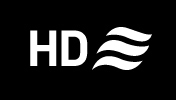

Steven Soderbergh’s latest circumvention of the motion picture industry takes on another problematic billion-dollar entertainment business—professional basketball. Working from a fabulous script by playwright, and Oscar-winning screenwriter Tarell Alvin McCraney (Moonlight), High Flying Bird tells the story of a quick-thinking, fast-talking sports agent named Ray Burke. Burke sets himself the herculean goal of ending a lockout season and taking on the National Basketball Association’s smug, rich, white gatekeepers. André Holland (Selma, 42, Moonlight) gives a powerhouse performance as Ray. Always playing things close to the edge, when we meet Ray he’s on the verge of being fired by his agency, which is not making any money during the lockout. Ray sees his job as helping the young athletes he manages assert their value against a racist system that pays them millions but treats them like goods to be bought, sold, and traded. The current labor dispute between the NBA and the players union could ruin Ray, or it might provide an opportunity a sharp guy like him can take advantage of.
A rare sports film that’s all about the business of the game rather than the game itself, High Flying Bird has the energy of Jerry Maguire and the intelligence of Moneyball. But this is a far more political picture than either of those.
McCraney’s dialogue and tight narrative sizzles, even though some structural choices late in the film inhibit its energetic flow, and some things that are set-up don’t pay off well. Of course, these quasi red herrings are part of the clever game of deception this script is playing along with its protagonist, but they prevent the movie from fully coming together.
The eclectic cast delivers exactly what we want from each of them. Newcomers Melvin Gregg and Justin Hurtt-Dunkley play first draft picks engaged in a Twitter war during the lockout. Kyle MacLachlan is the all-smiles owner of the New York Knicks, where the two feuding players will soon be teammates. Sonja Sohn is the tough-as-nails player’s association representative who enjoys fighting with the men she works for and against. Zachary Quinto is Ray’s clueless boss who chastises him for not playing by the rules, even though it’s these very tactics that make Ray such a good earner. Zazie Beetz is Ray’s calculating, sexy, whip-smart assistant—the ultimate millennial (in the best sense of that term). And the great Bill Duke plays a retired basketball player turned local youth coach and sage.
Like his previous movie, the psychological horror-thriller Unsane, Soderbergh shoots this on an iPhone which gives the film a slick, cool aesthetic that feels appropriate for Ray’s street-level, consumer-grade focus to his job and his surreptitious, under-the-radar approach to his tasks. Though full of minor artifacts that would not be present with professional digital cameras or 35mm film, the images here look far better in the grungy, intentionally DIY visuals of Unsane. Soderbergh seems to be having fun with the freedom of the format, but this starts to distract from the story he’s telling. And after about 30 of the movie’s 91 minutes, we become all too aware of the limitations of an iPhone equipped with a special anamorphic wide-angle lens. Everything is shot in deep focus, there are lots of smooth tracking shots, the camera can be placed in many vantage points larger cameras could never be, and… that’s it.
Soderbergh would seem to be the perfect director for this material. Always ahead of the curve when it comes to adopting new ways of shooting and distributing his movies, and always operating as a renegade within the Hollywood system, this subject matter fits well within his cannon. Soderbergh tells stories of smart outsiders who assert their own value against an indifferent system—a society (Kafka), the prison system (Out of Sight), the legal system (Erin Brockovich), the government (Traffic), the FBI (The Informant!) a virus (Contagion), or any other type of unfair structure—even if his character’s don’t succeed in their fight or it costs them everything in the end.
But Soderbergh is now making it difficult for viewers to separate the filmmaker from the film he’s making. And in High Flying Bird, this is a major drawback. Made for Netflix, the movie feels like a middle figure to the film industry as much as it feels like it’s about what it’s actually about. It covers the high-stakes world of professional sports at a time when consumer-grade tools can deliver as much excitement to fans as multi-million dollar corporations can. In that regard, a feature made outside of a traditional studio, shot cheaply on an iPhone, that looks pretty much indistinguishable from any major picture available on the streamer’s platform should align perfectly with the themes of this movie about how anything is possible if you know how to “play the game on top of the game.”
But while subverting the system is the narrative High Flying Bird is constructed around, it’s
themes run much deeper. And I can’t help but think that if the second film from
the writer of Moonlight was made by a
less well-known maverick director and given a traditional theatrical release,
we’d be paying a lot more attention to it, and its true subtext would be
resonating far more prominently.




